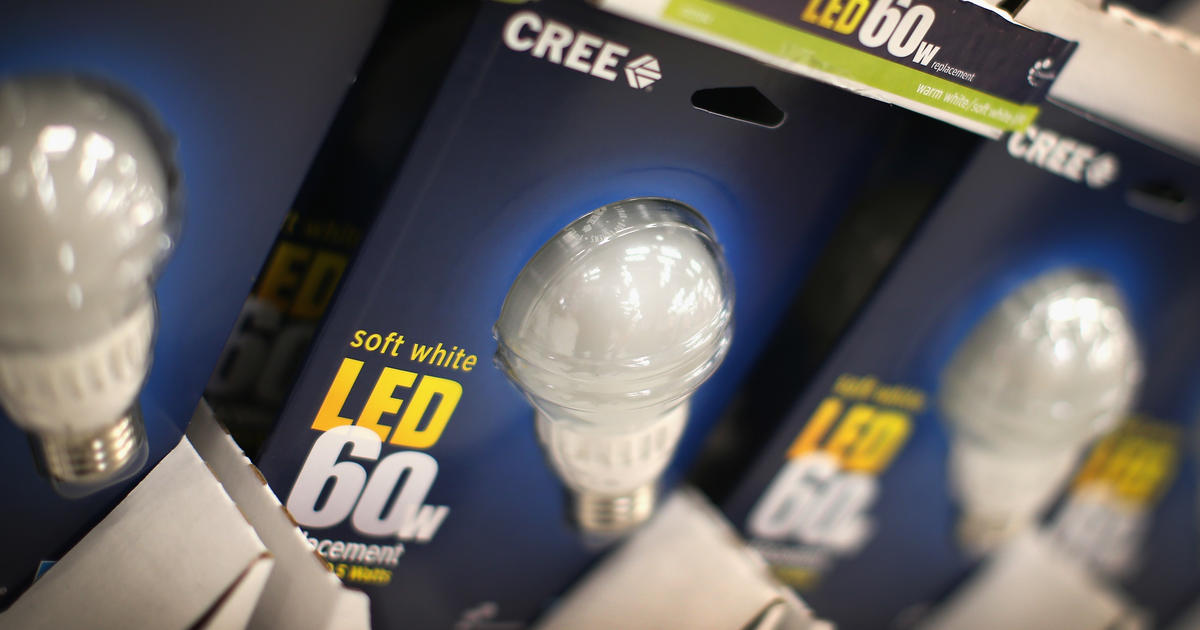A federal rule that took effect on Tuesday will largely consign one of the world’s great inventions — the incandescent light bulb — to the technological dustbin.
The rule from the U.S. Department of Energy bans the production and sale of traditional light bulbs in the U.S., encouraging consumers to switch to newer, more efficient LED lights.
Using LEDs can help conserve both the environment and consumers’ money. American households could save roughly $100 a year, or $3 billion collectively, by phasing out incandescent bulbs in their homes, the DOE’s projections show. The switch could also reduce carbon emissions by 222 million metric tons over 30 years, the Department of Energy said in a statement after passing the rule last spring.
LEDs outshine on price and durability
LEDs, or light-emitting diodes, are lighting products that pass an electrical current through a microchip, which illuminates tiny diodes, resulting in a visible light, according to government-backed electronics-rating organization Energy Star. LEDs are 90% more efficient than incandescent light bulbs, the Department of Energy says on its website. They also can last up to 25-times longer than traditional light bulbs.
Those features could translate into major savings for consumers who make the switch to LEDs. The average American household spends more than $4,400 a year on utility bills, with electricity accounting for 23% of that bill, according to data from moving company, Move.org. In addition, roughly one-third of American households neglected food- and medicine-related expenses to pay their electricity bills as energy inflation sent energy costs skyrocketing, a 2022 study from Lending Tree shows.
However, those advantages haven’t enabled LEDs to eclipse other lighting products’ popularity with American consumers. LEDs account for less than half of lighting products in American households, the U.S. Energy Information Administration’s (EIA) 2020 Residential Energy Consumption Survey shows.
Pushback against LEDs
While LEDs have advantages over Thomas Edison’s revolutionary design, they haven’t completely stolen the traditional light bulb’s shine.
Some consumers, like Tom Scocca, an editor who has written about LEDs, argue that the energy-efficient fixtures can’t replace incandescent light bulbs because they tend to lose their color and brightness over the years and aren’t quite compatible with dimmer switches.
“There is a world, almost within reach, in which LED lighting could be aesthetically fabulous,” Scocca wrote in an article for NY Magazine. “But right now, it’s one more thing that overpromises and underdelivers.”
Former President Donald Trump famously criticized LEDs.
“The bulb that we’re being forced to use, number one, to me, most importantly, I always look orange,” he said in 2019.
LEDs are still on the rise
Still, use of LEDs is on the rise.
The number of US households using LEDs as their main lighting source increased from 4% in 2015 to 47% in 2020, according to the EIA.
The market size of LEDs in the U.S. is estimated at $11.59 billion in 2023, and is projected to grow to $18.54 billion by 2028, data from market research consulting firm Mordor Intelligence shows.
